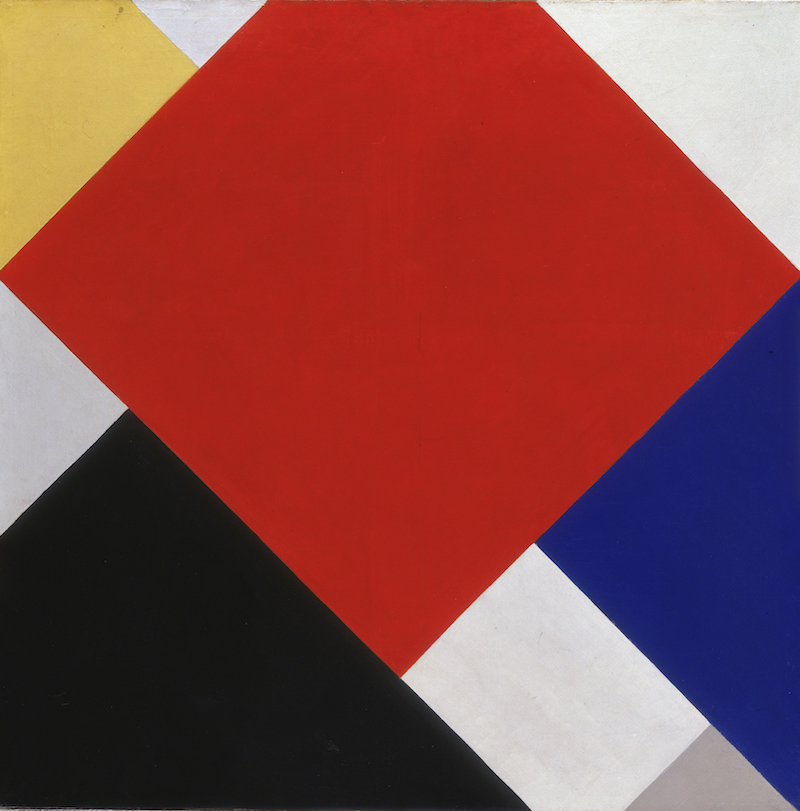Housed in St John’s Church, the Maastricht Antiquarian Book & Print Fair (MABP) presents some 30 antiquarian booksellers from The Netherlands, Belgium, France and Germany (11–13 March). A collaboration between Laurentius Old Master Prints and ThePrintsCollector brings together more than 1,000 works by Dutch and foreign masters, including Rembrandt and van de Velde. Look out for a print by Cornelis Cort after Titian’s painting The Rape of Lucretia; one of two works that Cort engraved for Titian in Venice in 1570–71. Other highlights include an 1820 miniature atlas of England and Wales by John Wallis at Antiquariaat Berger & De Vries; and a first edition of Old and New East India by François Valentijn (1726) at Gert Jan Bestebreurtje Rare Books. MABP also spotlights the Dutch graphic designer and cartoonist Joost Swarte. Don’t miss his guest lecture at the Jan van Eyck Academie on 4 March.
Guus Röell once again welcomes visitors to his annual Open House from 9–20 March. Alongside guest exhibitors Álvaro Roquette & Pedro Aguiar-Branco, Hansord; and Allan Hare, Röell presents a selling exhibition of furniture, works of art and Kunstkammer objects. Seats can also be reserved at Röell’s Collectors’ Dinners, held at his house every evening.
One hour’s drive from Maastricht, Galerie Lowet de Wotrenge in Antwerp hosts ‘Brueghel to Brustolon, Rubens to Ruysch’, a selling show of Old Master paintings, drawings and sculptures (12–20 March). While in Belgium, head to the 35th Eurantica – The Brussels Fine Art Fair (now located in Nekkerhal–Brussels North), which focuses on Belgian painting and features 100 galleries (5–13 March). All the greats are represented, from Félicien Rops and James Ensor to Paul Delvaux.
Theo van Doesburg
BOZAR, Brussels
Until 29 May
Van Doesburg was instrumental in founding De Stijl and in promoting abstraction throughout Europe. Some 140 works by the Dutch modernist are displayed alongside his contemporaries, among them Mondrian and Schwitters. Running concurrently is ‘Rembrandt in Black and White’, which presents 85 etchings, including landscapes and nudes, by the master.
Jan Toorop
Gemeentemuseum Den Haag
Until 29 May
Jan Toorop, a Dutch artist working around 1900, is primarily associated with Art Nouveau. This exhibition reveals the diversity of styles in which the artist experimented – including Neo-Impressionism and Symbolism. Featuring over 200 works, the show also considers Toorop’s impact on the course of modern art, tracing his influence on Klimt among others.
Balthasar van der Ast
Suermondt-Ludwig-Museum, Aachen
Until 5 June
Dutch Golden Age painter Balthasar van der Ast, who was born in Middelburg, but lived in both Utrecht and Delft, specialised in precise still lifes of flowers, fruit, and shells. Forty of his compositions, which grew more complex over time, are on display here, alongside works by his brother-in-law Ambrosius Bosschaert the Elder, in whose studio he trained.
Grayson Perry: Hold Your Beliefs Lightly
Bonnefantenmuseum, Maastricht
Until 5 June
Grayson Perry’s often autobiographical work probes social issues – gender, religion, class – while asking aesthetic questions about craftsmanship; his is a critique of both society and the art world. This exhibition reveals the diversity of Perry’s art, which includes tapestries, dresses, ceramics, and films – and even a complete house.
Head of a man, by an unknown collaborator of Pieter Coecke van Aelst © Collection Delineavit; photo: J. Geleyns/Roscan

From Floris to Rubens
Royal Museum of Fine Arts of Belgium, Brussels
Until 15 May
Eighty-seven works from a Belgian private collection reveal the centrality of drawing in The Netherlands during the 16th and early 17th century. Many of these works haven’t been on public display before, and include a range of sketches for paintings, stained glass, and tapestries by Flemish masters such as Floris, Rubens, Goltzius and Pieter Coecke van Aelst.
Portrait of a Lady in Green (c. 1530–32), Agnolo Bronzino. Royal Collection Trust/ © Her Majesty Queen Elizabeth II 2016

Maniera
Städel Museum, Frankfurt
Until 5 June
Through 120 key loans – including 50 paintings – this exhibition charts the development of the mannerist style (described as maniera by Vasari) in Renaissance Florence. Beginning in 1512, when the Medici returned to Florence, and ending around 1568, the show features seminal works by Pontormo, Rosso, and Bronzino.
From the March issue of Apollo: preview and subscribe here.







